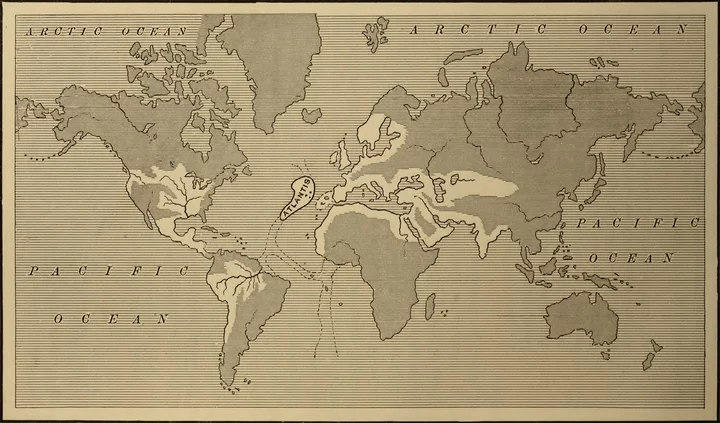There were giants in the earth in those days; and also after that, when the sons of God came in unto the daughters of men, and they bare children to them, the same became mighty men which were of old, men of renown.
— Genesis 6:4, KJV
###
I can’t keep up with today’s conspiracy theories. After posting last week’s GOU column celebrating the number seven, with particular reference to the Seven Wonders of the Ancient World, the comments — following what I would have thought was a pretty benign topic — came in thick and fast. “Most of those things are still under warranty compared to what was destroyed 11,500 years ago (YDIH),” was the comment that got things going. Half an hour after reading this, my nephew wrote asking, “Have you heard of the mud-fossil conspiracy theory?” And suddenly Doctor Who’s Silurians started to make sense, not to mention Atlantis and von Däniken’s Chariots of the Gods. All these different (and conflicting) lines of evidence proving — if you’re sufficiently gullible — that, by golly, we’re not the first advanced race to live on planet Earth. “They” were here before us.
It’s all nonsense, of course, unless you believe that the world’s archaeologists, geologists and paleo-anthropologists are all engaged in a vast conspiracy. (Probably more than the 400,000 folks who would have had to be in on “the moon landing didn’t happen” conspiracy.) Taking a couple of these wacky ideas at face value:
The Younger Dryas Impact Hypothesis
The Younger Dryas impact hypothesis (YDIH) is a fringe theory to explain Earth’s cooling period at the end of the Ice Ages, nearly 13,000 years ago. While the mainstream, widely-accepted explanation points to an influx of freshwater from Lake Agassiz (a huge lake that covered much of North America during the Pleistocene, starting about 2.6 million years ago) shutting down the “normal” flow of the “North Atlantic Conveyor” current, the YDIH posits a huge comet or asteroid raining fragments down over the Americas and Europe. The consensus is that it’s not totally wrong, but unlikely — virtually all the evidence supplied by proponents of the theory have been convincingly refuted.
Turns out, though, some folks realized there’s money to be made in keeping the theory alive, one of whom, British author Graham Hancock (Magicians of the Gods), has been promoting pseudoscientific theories for decades. According to Hancock, the putative Younger Dryas impact destroyed an ancient civilization — but not before its secrets had been shared with hunter-gatherers who rebooted civilization — hence the earliest that we actually know of, in Egypt and Mesopotamia.
Because, you know, those folks just weren’t smart enough to build pyramids and canals and cities and all the rest without help…
Atlantis and the Atlantean Empire, from Ignatius Donelly’s Atlantis: the Antediluvian World, 1882. Donelly, one-time vice-presidental candidate, was one of the first to claim that the true author of Shakespeare’s plays was Francis Bacon. Graphic: Public domain.
Atlantis
… or maybe it was Atlanteans?! In two of his dialogs, Plato describes Atlantis as a huge empire that ruled most of the known world some 11,000 years ago. When the Atlanteans tried to conquer Athens, the gods were displeased and their home base — an island in the Atlantic “beyond the Pillars of Hercules” (i.e. west of Gibraltar) was submerged. But lest I forget my nephew, there’s…
The Mud-fossil Conspiracy
…a wild and wonderful theory whereby some rocks contain the fossilized remains of ancient giants. Which actually makes Graham Hancock and company look quite rational!
Sometime, I’m going to have to write about Doctor Who’s Silurians.

CLICK TO MANAGE